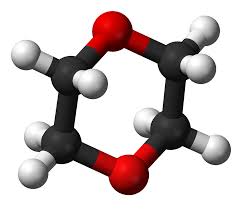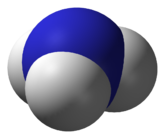Phosphorus-Hazard and Toxicity
Sep 5,2019
Outline
Elemental phosphorus was discovered in 1669 by Hennig Brand. About two hundred years later James Readman developed a process for phosphorus recovery from phosphatic rocks using an electric furnace. Phosphorus is one of the most widely distributed elements on earth. It is found as phosphate salts in nearly all igneous rocks and in sedimentary deposits and sea beds. Phosphorus occurs in more than three hundred minerals, usually associated with Ca, Mg, Fe, Sr, Al, Na, and several other metals, and with anions such as silicates, sulfates, oxides, hydroxides, and halides. Phosphorus is an essential element present in all living matter and is vital in biological and ecological processes. It occurs in DNA and other nucleic acids, and in bones. Phosphorus is used in pyrotechnics, smoke bombs, incendiary shells, and safety matches. It also is used in organic syntheses, manufacture of phosphoric acid, phosphorus trichloride, phosphine, and other compounds.
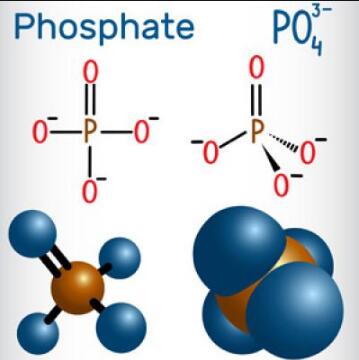
Toxicity Data
LD50 oral (rat): 3 mg/kg
PEL (OSHA): 0.1 mg/m3
TLV-TWA (ACGIH): 0.02 ppm (0.1 mg/m3)
Major Hazards
Spontaneously ignites in air; highly toxic by all routes of exposure. Toxicity
White phosphorus is a highly toxic substance by all routes of exposure. Contact of the solid with the skin produces deep painful burns, and eye contact can cause severe damage. Ingestion of phosphorus leads (after a delay of a few hours) to symptoms including nausea, vomiting, belching, and severe abdominal pain. Apparent recovery may be followed by a recurrence of symptoms. Death may occur after ingestion of 50 to 100 mg due to circulatory, liver, and kidney effects. Phosphorus ignites and burns spontaneously when exposed to air, and the resulting vapors are highly irritating to the eyes and respiratory tract.
Red phosphorus is much less toxic than the white allotrope; however, samples of red phosphorus may contain the white form as an impurity.
Early signs of chronic systemic poisoning by phosphorus are reported to include anemia, loss of appetite, gastrointestinal distress, chronic cough, a garlic-like odor to the breath, and pallor. A common response to severe chronic poisoning is damage of the jaw (''phossy jaw") and other bones. Phosphorus has not been reported to show carcinogenic effects in humans.
Health Hazards
Phosphorus toxicity can lead to gastrointestinal disorders and calcification of nonskeletal tissues, such as the kidneys, and lead to kidney damage. Phosphorus deficiency can lead to bone pain and muscle weakness. Excellent sources of phosphorus include canned salmon, cottage cheese, pork, sirloin steak and yogurt.
Sources of phosphorus: carbonated beverages, dairy products, fish, meats, poultry, processed foods
Roles in body: acid-base balance, bone and teeth formation, development and maintenance, energy metabolism
Deficiency: bone pain, general lethargy, muscle weakness
Toxicity: calcium imbalance in blood, bones and teeth, leading to calcium deposits in nonskeletal tissues, gastrointestinal disorders, kidney damage.
Flammability and Explosibility
White phosphorus ignites spontaneously upon contact with air, producing an irritating, dense white smoke of phosphorus oxides. Use water to extinguish phosphorus fires.
Red phosphorus is a flammable solid but does not ignite spontaneously on exposure to air. At high temperatures (-300 °C), red phosphorus is converted to the white form.
Reactivity and Incompatibility
White phosphorus reacts with a number of substances to form explosive mixtures. For example, dangerous explosion hazards are produced upon reaction of phosphorus with many oxidizing agents, including chlorates, bromates, and many nitrates, with chlorine, bromine, peracids, organic peroxides, chromium trioxide, and potassium permanganate, with alkaline metal hydroxides (phosphine gas is liberated), and with sulfur, sulfuric acid, and many metals, including the alkali metals, copper, and iron.
Red phosphorus is much less reactive than the white allotrope but may ignite or react explosively with strong oxidizing agents.
Storage and Handling
Because of its corrosivity, flammability, and high acute toxicity, white phosphorus should be handled using the "basic prudent practices", supplemented by the additional precautions for work with compounds of high toxicity and extremely flammable substances. In particular, work with white phosphorus should be conducted in a fume hood to prevent exposure by inhalation, and splash goggles and impermeable gloves should be worn at all times to prevent eye and skin contact. Phosphorus should be stored under water in secondary containers in areas separate from oxidizing agents and other incompatible substances.
Accidents
In the event of skin contact, immediately flush with water and remove contaminated clothing. Wet the skin until medical attention is obtained to prevent any remaining phosphorus from igniting. In case of eye contact, promptly wash with copious amounts of water for 15 min (lifting upper and lower lids occasionally) and obtain medical attention. If phosphorus is ingested, give the person (if conscious) large quantities of water to drink and obtain medical attention immediately. If large amounts of phosphorus or smoke and fumes from burning phosphorus are inhaled, move the person to fresh air and seek medical attention at once.
In the event of a spill, douse with water and cover with wet sand or earth; collect material in a suitable container and dispose of properly. Respiratory protection may be necessary in the event of a spill or release in a confined area.
Disposal
Excess phosphorus and waste material containing this substance should be placed in an appropriate container, clearly labeled, and handled according to your institution's waste disposal guidelines.
- Related articles
- Related Qustion
- Is phosphorus harmful to health? What are the food sources? May 28, 2024
Phosphorus has a concentration in the earth's crust of about 0.1% by weight. It is not found free in nature but is widely found in many minerals, usually as phosphates.
- Differences between red and white phosphorus and their applications Dec 18, 2023
White phosphorus is a toxic, waxy solid that can cause severe burns on contact with skin. Red phosphorus is an amorphous, non-toxic powder.
- Phosphorus: Production, application, toxicity and biological role May 6, 2023
White phosphorus is a highly toxic substance by all routes of exposure. Contact of the solid with the skin produces deep painful burns, and eye contact can cause severe damage.
1,4-dioxane is a clear liquid with ether-like odour. It is highly flammable and forms explosive peroxides in storage (rate of formation increased by heating, evaporation, or exposure to light). 1,4-Dioxane is incompatible with oxidising age....
Sep 5,2019Organic reagentsAmmonia, a colorless gas with a distinct odor, is a building-block chemical and a key component in the manufacture of many products people use every day. It occurs naturally throughout the environment in the air, soil and water and in plant....
Sep 5,2019Inorganic chemistryPhosphorus
7723-14-0You may like
- Phosphorus
-
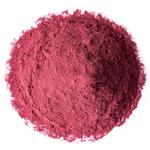
- $0.00 / 10kg
- 2024-12-17
- CAS:7723-14-0
- Min. Order: 10kg
- Purity: 99% purity
- Supply Ability: 1000 kg
- Phosphorus
-
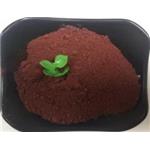
- $9.00 / 1KG
- 2024-01-08
- CAS:7723-14-0
- Min. Order: 1KG
- Purity: 99%
- Supply Ability: 50000tons
- Phosphorus
-
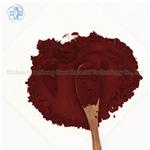
- $0.00 / 1ton
- 2023-09-14
- CAS:7723-14-0
- Min. Order: 1ton
- Purity: 99.99
- Supply Ability: 1000000tons




